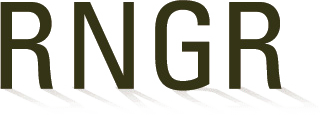
Acer (glabrum)
|
Edie Trimmer Nursery Manager Utah Division of Forestry, Fire and State Land - Lone Peak Nurse 271 Bitterbrush Lane Draper, Utah 84020 801 571-0900 801 571-0468 (fax) edietrimmer@utah.gov http://www.ggnpa.org |
|
| Family Scientific Name: | Aceraceae | ||
|---|---|---|---|
| Family Common Name: | Maple Family | ||
| Scientific Name: | Acer glabrum Torr. | ||
| Common Name: | Rocky Mountain Maple | ||
| Species Code: | ACEGLA | ||
| General Distribution: | A. glabrumis found from Alaska south through British Columbia and Alberta and througout the western United States. | ||
| Propagation Goal: | plants | ||
| Propagation Method: | seed | ||
| ProductType: | Bareroot (field grown) | ||
| Stock Type: | 2+0 | ||
| Time To Grow: | 2 Years | ||
| Target Specifications: | Height:12 in.<br> Caliper:N/A<br> Root System: Root system must balance top growth. | ||
| Propagule Collection: |
Seeds are wild collected during fall months and are kept separated according to site, elevation and source. Mature fruit is a winged samara. |
||
| Propagule Processing: | Seeds are typically sown as soon as they are brought to the nursery. | ||
| Pre-Planting Treatments: | Seeds are stratified naturally by planted them in the fall in a thin layer of sand on mulched field beds. | ||
| Growing Area Preparation/ Annual Practices for Perennial Crops: |
Soils: Our field soils are Taylorsville Sandy clay loam with Cca horizon shallower than 12", Taylorsville sand clay loam variant with Cca deeper than 12",Taylorsville Clay loam variant with Cca horizon shallower than 12" and Taylorsville Clay loam variant with Cca horizon deeper than 12". Field Bed Preparation: We mark out and form beds as needed; and apply 0-45-0 (N:P:K) in April. 2 to 3 inches of compost are applied to seed beds prior to sowing. Sulfur is applied during May. Fields are cultivated for weeds as needed throughout the growing season. Irrigation: We use overhead irrigation with two inch aluminum pipe that can be moved from field to field each year. Our principle water source is from a canyonstream to the north of here and is very good quality water. |
||
| Establishment Phase: | Seeds are sown in late September by hand at a depth of 0.25 inches. Seeds are lightly covered and irrigated when soils appear to be drying out on warm days. Desired field density is 14 trees per square foot. | ||
| Length of Establishment Phase: | 1 month after emergence in the spring. | ||
| Active Growth Phase: |
Year 1: Fertilization: We apply Morgro 21-0-0 (N:P:K) with the Gandy spreader (setting 18, speed 2 mph, rpm 1100 to 1200) the second week of each month during the growing season; from April to August. We apply fertilizer at the rate of 120 lbs/acre. We irrigate for at least 45 minutes following all fertilizer applications. This insures that foliage will not burn and incorporates fertilizer into the root zone. Fertilizer is not applied when foliage is wet. All sulfur and 0-45-0 (N:P:K) applications must be mechanically incorporated since these amendments are not mobile in the soil. Year 2: 2+0 nursery stock is fertilized the second year using the Herd Spreader, since stock is usually too tall the second year to use the Gandy spreader. ROOT PRUNING PROCEDURES: Deciduous species are pruned when they are 10 to 12 inches tall. Irrigate heavily for 2 to 3 days prior to pruning to saturate the root zone. Set pruning blade to slightly wrench seedlings as they are pruned. Check pruning depth frequently and adjust as needed. Irrigate for a minimum of 2 hours following root pruning to settle soil back around roots. This step is critical to eliminate post root pruning mortality. Irrigate field heavily for 2 to 3 days to further settle the soil. Top Pruning: Top pruning is typically done with sickle bar mower attached to the 656. Operational speed varies, but is not done above 1200 rpm. Cut at the desired height; constantly checking and adjusted the cut during the process. Keep field workers behind the cutting head. |
||
| Length of Active Growth Phase: | 4 months | ||
| Hardening Phase: | Hardening begins during the third week of August or when dormancy is induced. No fertilizer is applied after August 28th. Irrigation frequency and duration is shortened and applied only when needed. | ||
| Length of Hardening Phase: | 2 months | ||
| Harvesting, Storage and Shipping: |
Lifting window is during mid November of the second year when seedlings are completely dormant. Seedlings are hand lifted after the seedling beds have been undercut at a depth of 10 or 12 inches using a lifter. Fall lifted seedlings are "heeled in" in sandy soils after we have graded and bundled them in bundles of 25. They are lifted in spring before they break dormancy then stored in our cooler on stacked pallets. We keep lifted seedlings in our cooler at between 36 to 42 degrees F and at a relative humidity of 92 to 98% with good air circulation. |
||
Citation:
Zeidler, Scott. 2003. Propagation protocol for production of Bareroot (field grown) Acer glabrum Torr. plants 2+0; Utah Division of Forestry, Fire and State Land - Lone Peak Nurse Draper, Utah. In: Native Plant Network. URL: https://NativePlantNetwork.org (accessed 2025/11/04). US Department of Agriculture, Forest Service, National Center for Reforestation, Nurseries, and Genetic Resources.



